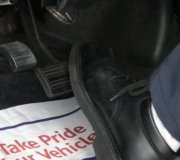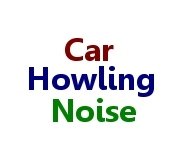Dandy. The next suspect would probably be a rubbing splash shield behind one of the rotors. I've also run into a few axle shaft seals that make a squeaking noise but those were on Chrysler products. The way to find that is to spray any type of light lubricant into the opening of the transmission where the inner cv joint goes in. You have to douse it pretty good to get enough to run all the way in there. If it's a noisy seal, that oil will quiet it down for up to a day, but that's it. The only permanent fix is to replace the seal.
There is a tool you might be able to borrow or rent from an auto parts store that borrows them called the "Chassis Ear". It is a set of six microphones, a switch box, and headphones. You clip the microphones to suspect points, then drive around while listening with the headphones. You can move the microphones around to zero in on the source of the noise. Be aware that many mechanics have never seen or even heard of this tool. Suspension and alignment mechanics use it to find rattles, squeaks, and other noises.
SPONSORED LINKS
Monday, January 26th, 2015 AT 3:10 PM



